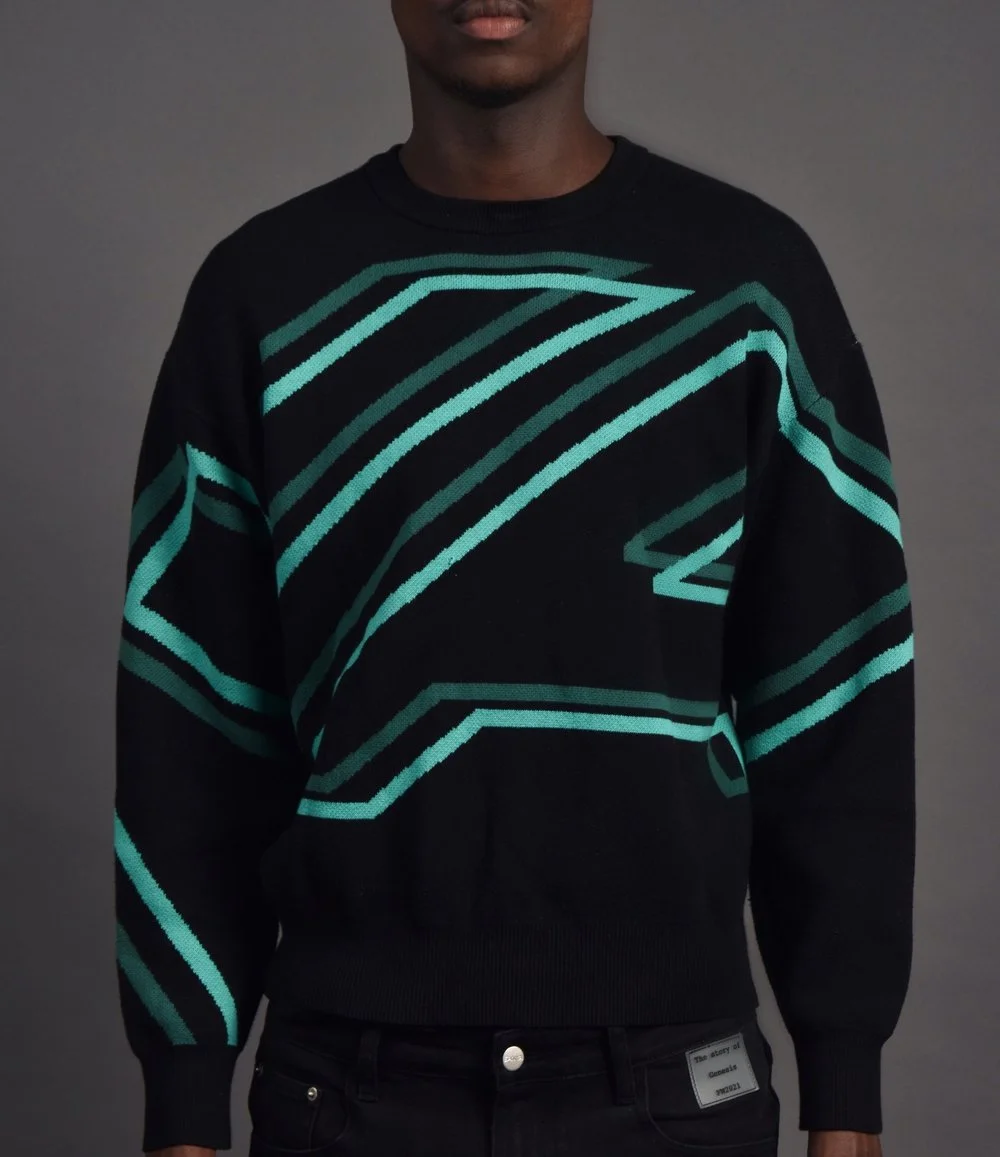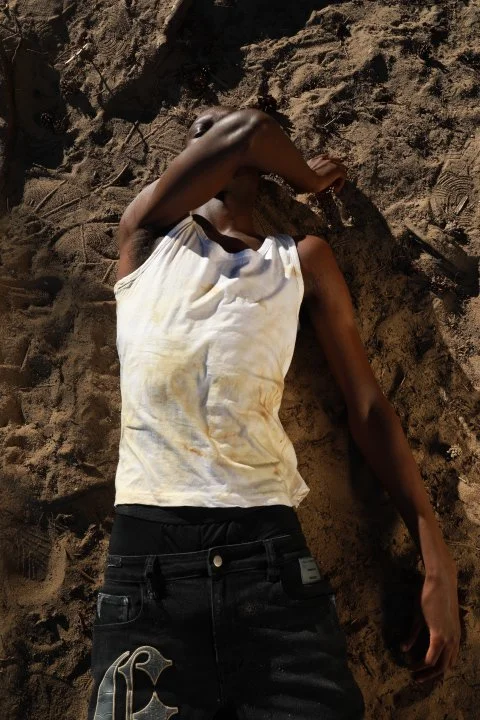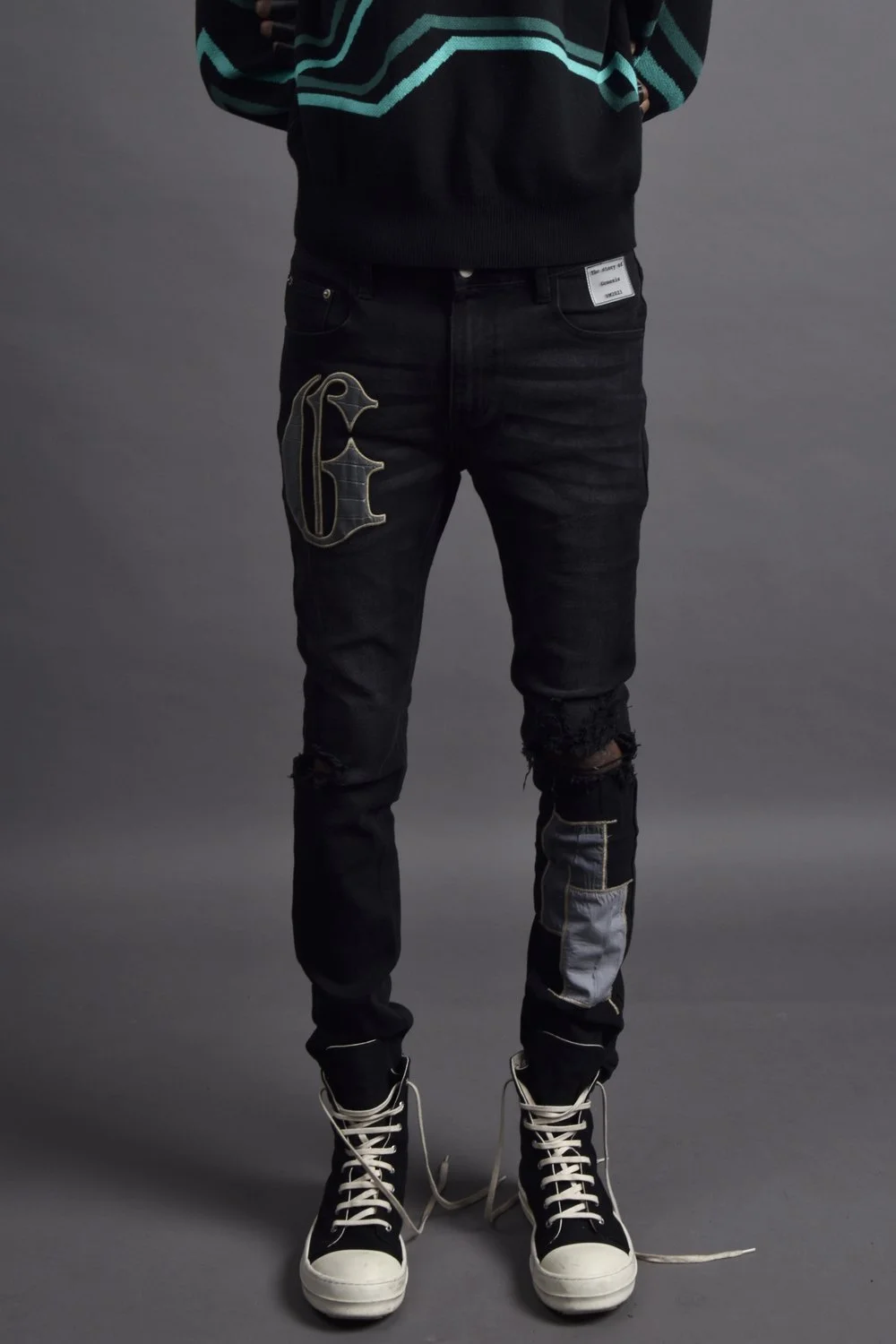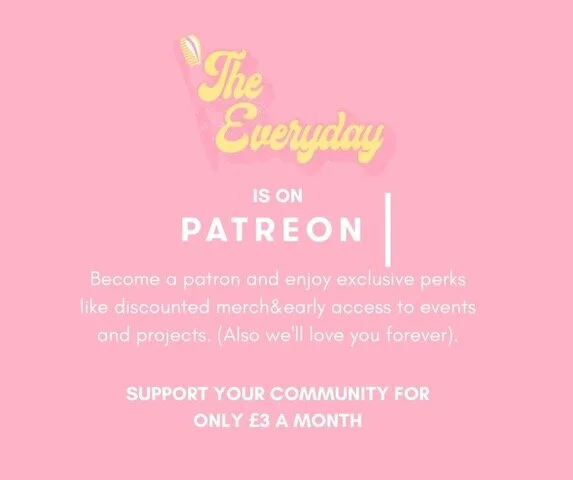If You Don't Know, Get To Know: SANYA
I spoke to South-East London designer and artist Liz Sanyaolu who recently launched her brand, SANYA. A luxury menswear line for the people. We talked about her many influences and love for London's fashion and street culture. SANYA has a clean, minimal, and experimental aesthetic. Garments at SANYA generally focus on innovation and fit reconstruction. With a growing interest in construction and deconstruction leaving its mark, the brand's slogan 'to destroy is to create' is a nostalgic reminder that dismantling something often leads to the beauty of creation.
Congratulations on your GQ coverage. How does that make you feel?
I was excited! Being in the fashion world, especially high fashion can be very gatekept, so I'm trying to break into things. It's more challenging when you're independent. For example, when I did the store launch in Oxford Street, even though many people were there, the 'fashion people' weren't there. So, when GQ reached out to me, it felt like people are watching me, and I've got some sort of buzz.
Liz touched upon the differences between SANYA and another of her creative outlets – Glitter Customs. She talked about the differences in barriers to entry between the high fashion space and her customisation service. Even though it is a premium service that she offers, Liz goes on to say
The target audience for that (glitter customs) is so much larger and way more profitable than SANYA. There's no barrier, and I can do whatever I want. It's for everyone, and I had had to shift my thinking when it came to SANYA and adapt. Coming from South-East, London I had to adapt because the target market for what I'm trying to do is so much more different to what I have been doing before. I think there's a nagging feeling in me to maybe lower prices. I have to remind myself it's a whole different level, especially with what I want to do in the future. I want to keep coming up with the ideas I'm coming up with and try new concepts. To me, SANYA is a visual conversation, and it's so much more different to producing clothes; that's only one aspect of a brand but what a brand actually stands for is a completely different thing. So, it's like, keep going, I know I've got something; I just need to keep working at it whether or not they want to hear it or not.
Where did your interest in fashion come from, and What made you turn that interest into a tangible product?
I think I was 14, maybe 15 at the time. That's when I started Glitter Customs. I remember seeing a pair of trainers online that were literally glitter customised trainers, but they were around £250. Then I was thinking, why am I paying £250 for trainers? I came from a creative background. In primary and secondary school, I used to make paper guns and origami. I would get in trouble because the school thought I was interested in terrorism, but that wasn't it. I'm very interested in the breakdown of things from early I would buy something, take it apart and see if I could put it back together and that's what I was really interested in, the deconstruction and reconstruction of something, and that's how the brand slogan came about, 'to destroy is to create.'
When I got to secondary school, I would sell sweets, chicken wraps, anything really. I was just hustling. I saved enough money, but I thought, why not make the shoes instead? I was so naïve. I didn't even watch a video on customising shoes, but I just did it. For some reason, my brain knew what to do like I've done this before. So, I did it, posted it on Snapchat, and everyone went crazy, asking me where I got it from. When I told them I made it, no one believed me. I didn't plan on selling that custom, but I remember feeling hurt, so I decided to make another pair, selling the one I just made. Once I saw people were interested in my glitter customs, I decided to sell shoes and never said no to requests. I went from only doing glitter customs to working with paint on shoes to customising clothes. I just kept saying yes! Over time my skills kept developing way more than I imagined them to. Then, in 2020 my friend invited me to a Converse event at London Fashion Week. At this event, we were customising trainers, and I remember seeing loads of big names there, like Tyler the Creator. I got first-hand experience of what it felt like to be in that industry, and it was such a surreal feeling because I had never been there before, but I felt in place. Also, glitter customs got to a point where I felt my creativity and what people demanded were on different levels. That's when I thought, let me do this high fashion thing properly.
It's Clear to say that customisation played a considerable part. How else did it help you?
Yeah, it's helped a lot. Through the custom stuff, I learned very skilled garment construction because I was always deconstructing garments. It's odd because I never went to fashion school, but I worked with so many jeans and so many items it got to a point where I knew how to make a pair of jeans from scratch because I cut apart many of them. You can see part of that process in my Genesis video for SAYNA.
As the conversation progressed, Liz and I talked about her other experiences at school, explaining how the way art and textiles were taught and how she understood things were completely different in her head, leading her to choose science-based subjects A-Level. Her mum encouraged her to pursue a more creative subject at A-Level, to the surprise of Liz.
As a Nigerian child, it shocked me that my mum wanted to do something more creative. I was doing well in those science subjects, and usually, that's what African parents want. So, it was nice to receive that support from my mum; she wanted me to do what made me happy.
How have your Nigerian roots and South-East London upbringing influenced your brand?
I was actually born in Nigeria but came here when I was one, but I've stayed in touch with my Nigerian culture. SANYA is my last name, but the full Nigerian name is Sanyaolu. I even speak and understand Yoruba. Just the whole Nigerian culture, I'm very much in it and wouldn't have it any other way.
For SANYA, the first couple weeks when I started, I had this mentality that it had to be super strict, high fashion, couture, very traditional. After doing that for two weeks, I knew this wouldn't go anywhere because it's not me. I wanted it to be super amazing and super this and that, but it wasn't me. I study people like Virgil who have such a foot in street culture and culture in general, and when I'm watching all these high fashion shows like LV, Prada etc. I'm seeing what was once such a prestigious, gatekept culture, looking towards street culture to be cool, hip, and modern. It's like they need people like us to keep high fashion going. It was sort of a realisation for me that being from South London, being Nigerian, being immersed in street culture and having that influence is why I do what I do. As much as SANYA is creative, it's also a business, and I need to give people a reason to like SANYA. There are so many sick clothes out there, so why should someone buy into me over the other person and realise that my upbring and story are important to that. It's all about having a visual conversation through my brand. Just embracing where I come from instead of shying away from it is probably the best thing about SANYA.
Your debut collection focuses on the concept of time. Can you explain how you decided that time would be the focus of your collection?
When it hits that 12:00 AM walk, I just get so zoned in. That's when I'm most productive. I remember in lockdown, I wasn't doing too much; school was off, and SANYA was at way, way early steps, glitter customs was going crazy, but I had help. I was 16/17, and it was a very chilled period for me. At that time, I could afford to stay up all night on the phone and do nothing but just chill. I'd be on the phone from 6 PM to 6 AM the next day, doing nothing. I would sit at my desk, and where I'm sat, there's a huge window, and when I look straight, all I can see is the sky. Sometimes I just be looking at the sky and one time I remember looking and started questioning things, like when I'm going to bed my mum is leaving for work. When I wake up, she's coming back from work. It gave me a different perspective of another person's life and another person's cycle. It was really weird to see that what we are experiencing in the same household in the same hours is completely different. I will never forget staying up for 36 hours straight, no sleep, and I saw the way life was working. I saw what time my phone was active and quiet, and I thought to myself, we have this concept of time. The sun rises and sets, and I was thinking about how humans understand time. From there, I started thinking about time in a biological context and in the context of nature. The reason why was because I must have been working with someone, we were both the same age, but she looked older than me. It became a growing concept with me, and I started questioning things. I read Genesis, which talks about creation so much more different from what we understand. I couldn't help but think about Adam and Eve. They were on the planet by themselves with no concept of time or activities to let them know it was a certain time, like when someone comes back from work, you know it's about this time. So yeah, I think that bit of lockdown really sparked that for me, and I translated that into my work.
Do you see yourself exploring concepts as big as time with future collections, or will you go with what feels right when you're ready to start your next collection?
For the next few collections, I think I might tone it down because what I realised is that not everyone thinks like me. To some people, they may not see where I am coming from. A visual conversation can only do so much compared to actually talking to someone. When I talk to people, it makes sense what I'm trying to say with my clothes, but it's not always like that initially, so for future collections, I will tone it down until I get to the point where I think the brand has an audience with a similar mindset. As I've released the brand now, there's no specific target audience, there's no crazy fanbase, there's no diehard SANYA fans, so people are going to take the time to go into it as much as they could, compared to when I get bigger. For example, if Kanye says the number 10 on Instagram, there will be fans that will look into something he did five years ago and give you a dissertation on what that number 10 means. When I eventually do get bigger, I can start going deeper things, like one of the jeans from my current collection has a G sign on it, made from a reptile print. To everyone else, that might just look cool, but to me, I did that because you've got the serpent from Adam and Eve hence the reptile print. You've also got G for Genesis, things like that, which I can explain now, but I need to get to a point where people can analyse my collections because they're so interested in my brand.
Thank you to Liz for having this conversation with me. After this interview, I’m looking forward to seeing what SANYA can do in the near future. Her aspirations of breaking into the high fashion space is inspiring. The brand has just recently launched and you can check it out on the official website or on Instagram.









